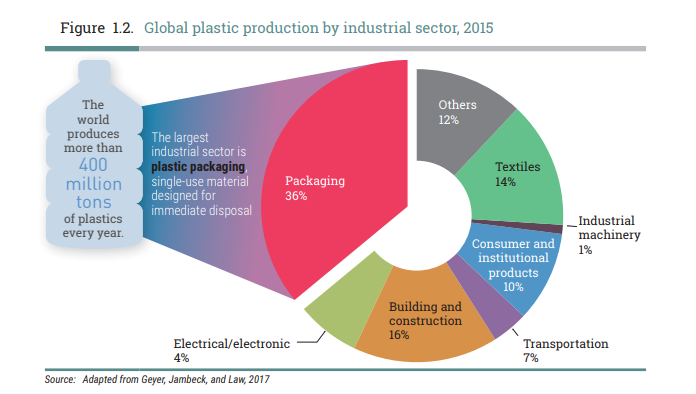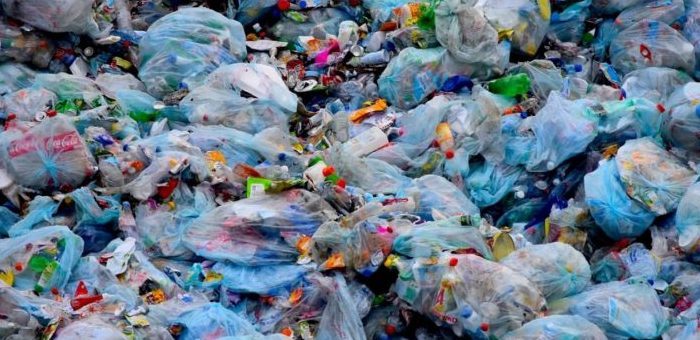A recent report by UN Environment, examining the state of plastic pollution in 2018, finds a surging momentum in global efforts to address plastic pollution. The first-of-its-kind accounting finds plastic bag bans, if properly enforced, can effectively counter one of the causes of plastic overuse. The report also reveals that governments are increasing the pace of implementation and the scope of action to curb the use of single-use plastics.
The report, entitled “Single-use Plastics: A roadmap for Sustainability” and developed in cooperation with the Indian Government and the Ministry of Environment, Forest and Climate Change, presents case studies from more than 60 countries, analyzing the complex relationships in plastics economy and offering an approach to rethink how the world produces, uses and manages single-use plastics.
Key findings
- To tackle the roots of the problem, governments need to improve waste management practices and introduce financial incentives to change the habits of consumers, retailers and manufacturers, enacting strong policies that push for a more circular model of design and production of plastics.
They must finance more research and development of alternative materials, raise awareness among consumers, fund innovation, ensure plastic products are properly labelled and carefully weigh possible solutions to the current crisis. Governments must engage a broad range of stakeholders in the decision-making process as they seek to tackle the crisis. To meet the rising tide of plastics, we urgently need strong government leadership and intervention.
- Governments around the world are increasingly awake to the scale of plastic pollution, with more than 60 countries having introduced bans and levies. Plastic bags and foamed plastic products like Styrofoam have been the main focus of government action so far.
This is understandable. These plastic products are often the most visible forms of plastic pollution. It is estimated that one to 5 trillion plastic bags are consumed worldwide each year. Five trillion is almost 10 million plastic bags per minute. If tied together, all these plastic bags could be wrapped around the world seven times every hour.
- It is too early to draw robust conclusions on the environmental impact that bans and levies have had. In 50% of cases, information about their impact is lacking, partly because some countries have adopted them only recently and partly because monitoring is inadequate. In countries that do have data, about 30% have registered drastic drops in the consumption of plastic bags within the first year. The remaining 20% of countries have reported little to no change.
- Of the countries that have reported little to no impact, the main problems appear to be
(i) a lack of enforcement and
(ii) a lack of affordable alternatives. - Public-private partnerships and voluntary agreements can be good alternatives to bans. Voluntary reduction strategies allow citizens time to change their consumption patterns and provide an opportunity for affordable and eco-friendly alternatives to hit the market. The promotion and adoption of reusable bags is an example of a reduction strategy where the choice lies with the consumer.
 UN Environment has drawn up a 10-step roadmap for governments that are looking adopt similar measures or improve on current ones. The steps are based on the experiences of 60 countries around the globe:
UN Environment has drawn up a 10-step roadmap for governments that are looking adopt similar measures or improve on current ones. The steps are based on the experiences of 60 countries around the globe:
- Target the most problematic single-use plastics by conducting a baseline assessment to identify the most problematic singleuse plastics, as well as the current causes, extent and impacts of their mismanagement.
- Consider the best actions to tackle the problem (e.g. through regulatory, economic, awareness, voluntary actions), given the country’s socio-economic standing and considering their appropriateness in addressing the specific problems identified.
- Assess the potential social, economic and environmental impacts (positive and negative) of the preferred short-listed instruments/actions. How will the poor be affected? What impact will the preferred course of action have on different sectors and industries?
- Identify and engage key stakeholder groups – retailers, consumers, industry representatives, local government, manufacturers, civil society, environmental groups, tourism associations – to ensure broad buy-in. Evidence-based studies are also necessary to defeat opposition from the plastics industry.
- Raise public awareness about the harm caused by single-used plastics. Clearly explain the decision and any punitive measures that will follow.
- Promote alternatives. Before the ban or levy comes into force, assess the availability of alternatives. Ensure that the preconditions for their uptake in the market are in place. Provide economic incentives to encourage the uptake of eco-friendly and fit-for-purpose alternatives that do not cause more harm. Support can include tax rebates, research and development funds, technology incubation, public-private partnerships, and support to projects that recycle single-use items and turn waste into a resource that can be used again. Reduce or abolish taxes on the import of materials used to make alternatives.
- Provide incentives to industry by introducing tax rebates or other conditions to support its transition. Governments will face resistance from the plastics industry, including importers and distributors of plastic packaging. Give them time to adapt.
- Use revenues collected from taxes or levies on single-use plastics to maximize the public good. Support environmental projects or boost local recycling with the funds. Create jobs in the plastic recycling sector with seed funding.
- Enforce the measure chosen effectively, by making sure that there is clear allocation of roles and responsibilities.
- Monitor and adjust the chosen measure if necessary and update the public on progress.
Find out more herebelow:































































